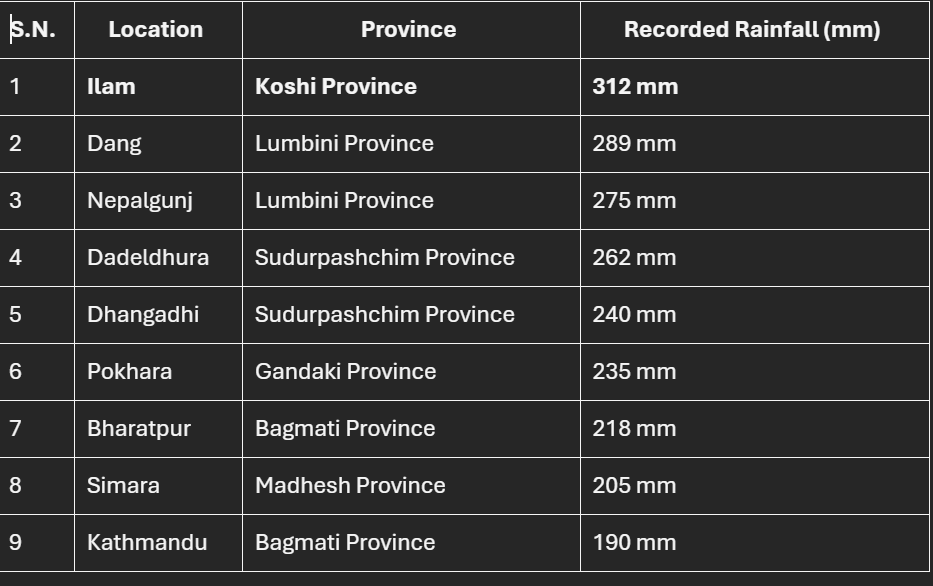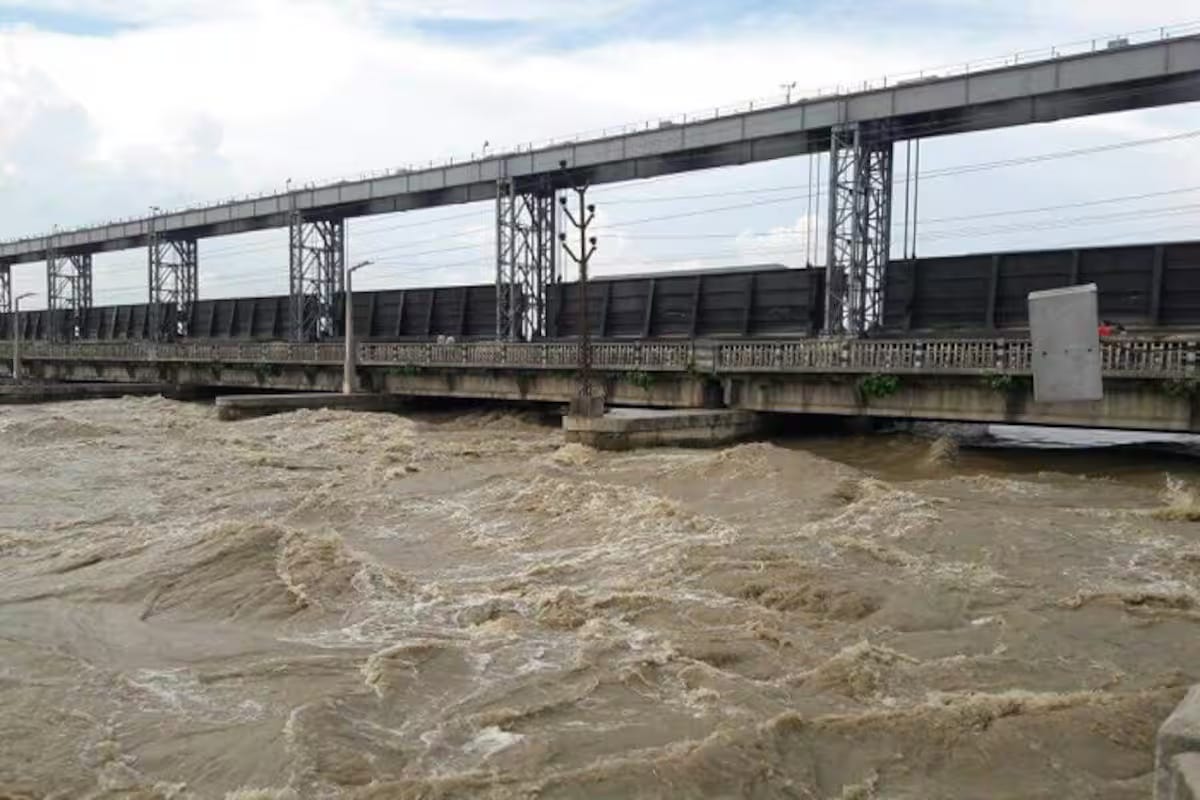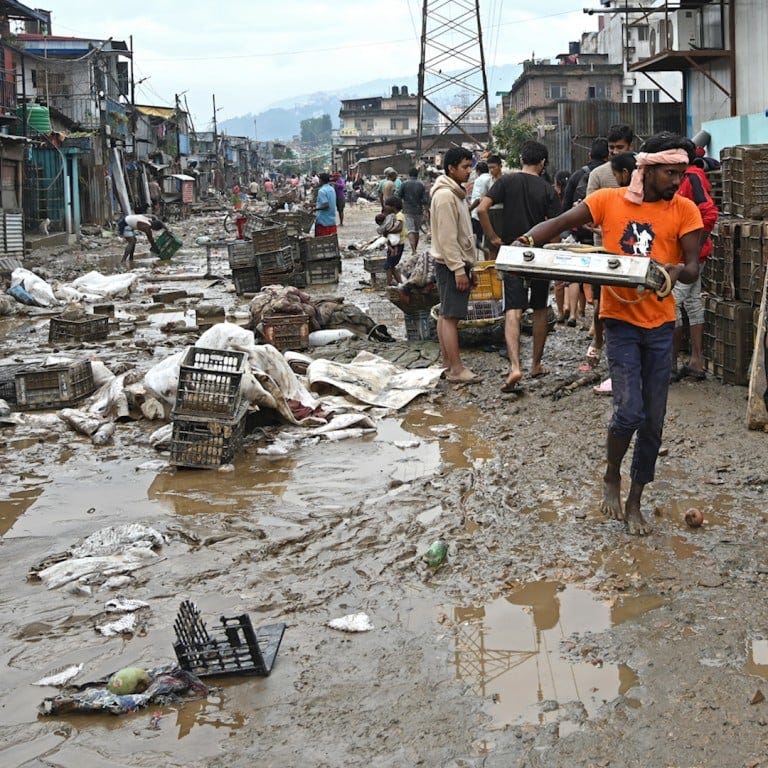October 6: The Toll of Water
The unrelenting monsoon has carved a path of destruction across Nepal, claiming at least 60 lives by Monday, October 6, 2025. What was forecast as a retreating monsoon instead gathered a final, furious strength, slamming the country with torrential rains that have triggered catastrophic landslides and floods, pushing critical infrastructure to the brink and prompting a massive government response.
The districts of Ilam, Panchthar, Udayapur, Khotang, and Rautahat are among the hardest hit, with communities buried under landslides, homes submerged, and vital highways severed. The scale of the crisis is immense, affecting at least 11 districts and leaving a nation grappling with the aftermath.

A Nation Submerged
The storm system that unleashed this destruction began as a low-pressure area over the Bay of Bengal — a familiar pattern in South Asia. But when it collided with Nepal’s mid-hills, it dumped an extraordinary volume of rain that shattered records. The following data from the Department of Hydrology and Meteorology (DHM) shows the staggering volume of water that fell in a critical 24-hour period.
Table: Recorded Rainfall During the Peak 24-Hour Period

Source: Department of Hydrology and Meteorology (DHM)
According to the Department of Hydrology and Meteorology (DHM), Ilam alone received 312 mm of rainfall in 24 hours, followed by Dang (289 mm) and Nepalgunj (275 mm). Anything above 200 mm in a day is considered extreme. These were numbers that spelled disaster.
In Ilam, the rain turned the earth to liquid. A massive landslide tore through a hillside settlement, burying houses and people alike — a single event that accounts for much of the rising death toll.

Critical Hours at Koshi Barrage
As rainwater poured from the hills, it surged into the mighty Koshi. By Sunday night, water levels at the Koshi Barrage had reached dangerous highs. Authorities were forced to take a desperate measure — opening all 56 gates for the first time in years to relieve the pressure. Even then, the barrage remained on red alert for several tense hours, threatening communities on both sides of the Nepal–India border.
In a bid to save lives, the government sent out over 6.5 million emergency SMS alerts through NTC and Ncell — one of the largest nationwide alert campaigns in history. It was a moment that underscored both Nepal’s growing digital preparedness and the immense scale of the threat.

Widespread Impact on Infrastructure
The infrastructure damage has been catastrophic across multiple sectors. According to the Department of Roads, floods and landslides damaged roads and bridges at 263 locations nationwide, with estimated costs exceeding Rs 4.63 billion – roads accounting for Rs 4.34 billion and bridges Rs 281 million. The Mechi Highway suffered damage at nine locations, while the Koshi Highway was affected at seven locations.
The telecommunications sector faced severe disruptions, with initial assessments estimating Rs 300 million in damages. Nepal Telecom suffered Rs 150 million in losses while Ncell reported Rs 70 million in damages. Emergency teams are working to restore communication lines despite challenging access conditions.
Energy infrastructure also sustained significant damage, with 32 hydropower projects affected across 10 districts, halting 180 MW of operational capacity from 17 projects. The Nepal Electricity Authority had deployed pumps to protect critical substations from flooding.
Agricultural Crisis and Food Security
The Ministry of Agriculture and Livestock Development has initiated a comprehensive assessment of agricultural losses across all seven provinces. Information Officer Mahananda Joshi confirmed that provincial agriculture offices are collecting data on flood-damaged crops, livestock losses, and affected farming infrastructure in coordination with local governments.
Preliminary estimates suggest agricultural damage could reach Rs 6 billion, with districts including Saptari, Siraha, Dhanusha, Mahottari, Sarlahi, Rautahat, Bara, Parsa, and others severely impacted. The ministry plans to provide targeted relief to affected farmers based on comprehensive damage assessments currently underway.

Economic Impact and Reconstruction
The economic impact is becoming increasingly clear as damage assessments continue. Infrastructure alone has suffered losses exceeding Rs 4.63 billion for roads and bridges, with telecommunications sector damage at Rs 300 million and agricultural losses estimated at Rs 6 billion. The Morang-Sunsari industrial corridor reported losses exceeding Rs 500 million, with Arihant Multi-Fibers Limited alone suffering Rs 300 million in damages.
Tourism, a key sector of Nepal’s economy, has also been impacted. The flooding has damaged access roads to several popular trekking routes and heritage sites. Hotel associations report numerous cancellations during what is typically the beginning of the peak tourist season.
The World Bank has noted that these recent floods, combined with earlier unrest, pose significant risks to Nepal’s economic growth projections for the current fiscal year. Relief efforts are being coordinated through established emergency response mechanisms, with various donor agencies and development partners preparing to support affected communities.
Response and Recovery Efforts
The human and infrastructural cost of the disaster is immense. As of October 7, 2025, the confirmed death toll stands at 60, with casualties including 19 men, 26 women, and 15 children across 11 districts. Ilam district recorded the highest toll with 37 deaths, followed by Panchthar , Udayapur, Rautahat , Khotang , and single fatalities in Sunsari, Morang, Sindhuli, Mahottari, Kavrepalanchowk, and Sindhupalchowk.
Security forces have been deployed en masse, using boats and helicopters in daring rescue operations to pluck stranded citizens from rooftops and isolated areas, though poor weather has occasionally hindered these efforts. A KMC police officer was quoted saying, “We are helping to relocate the probable victims and ensure everyone reaches safer ground.”
The Nepal Army has established 15 temporary relief camps across the affected districts, providing shelter to over 5,000 displaced persons. Medical teams from the Ministry of Health are conducting vaccination campaigns and distributing water purification tablets to prevent health issues.
Community Resilience and Hope
Despite the widespread destruction, stories of solidarity and recovery have emerged across the affected regions. Local communities quickly organized volunteer groups for relief distribution and cleanup efforts, with young people from nearby cities mobilizing to provide essential supplies to isolated villages.
The tourism industry demonstrated remarkable unity in supporting stranded visitors. Hotels across Chitwan offered 75% discounts to stranded passengers, with some providing free accommodation entirely. Similarly, Pokhara hotels provided free food and lodging to stranded tourists while offering 20% discounts to all other visitors. With 21,000 tourists currently in Nepal confirmed safe by the Nepal Tourism Board, these hospitality measures reinforced the country’s commitment to visitor safety even during natural disasters.
Neighbors in the hardest-hit areas opened their homes to flood victims, while community kitchens sprang up to provide meals to affected families and rescue workers. The coordinated response across sectors – from volunteer groups to the hospitality industry – demonstrates Nepal’s unwavering resilience in overcoming natural disasters and emerging stronger together.
As waters recede and tourism activities resume across the nation, the overwhelming community support and rapid recovery efforts highlight the spirit of cooperation that defines Nepal’s response to adversity.
